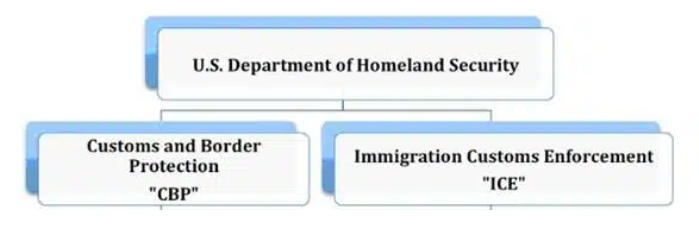President Trump has promised mass deportations of undocumented immigrants.
In the past months, the federal government and the media have released a dizzying array of statistics on this topic. Much of this information has been inaccurate or confusing.
This three-part blog series breaks down some of the legal concepts that are involved when the federal government removes a foreign national from the United States. Our goal is to provide a bird's eye view into what is going on at the Southern border and within the interior of the United States, regarding the topic of mass deportations.
CBP v. ICE:
Most news articles don't distinguish between US Customs and Border Protection ("CBP") and US Immigration Customs Enforcement ("ICE"), but it is important to understand that these are two separate law enforcement organizations within the U.S. Department of Homeland Security1 with (historically) different functions. The next two blogs in this series will outline the respective role that each agency plays in the removal process.
CBP operates at the US border and surrounding areas2 while ICE operates within the interior of the country.

Criminal v. Non-Criminal Arrests:
Both CBP and ICE can make arrests: criminal arrests for individuals alleged to have violated the criminal laws, and administrative arrests for those who are not alleged to have committed a crime, but rather, are alleged to have violated the immigration laws.3
A criminal offense is a violation of the law that can result in jail time, while an administrative offense is a less serious violation that usually results in a fine.Common criminal offenses include drug crimes, assault and battery, robbery/ theft and fraud. Common administrative offenses include speeding, minor tax offenses, and being physically present in the U.S. without proper authorization.
Most removals of undocumented immigrants are for administrative and not criminal offenses. For example, the Transactional Records Access Clearinghouse (TRAC) estimates that, in FY 2021, only 1.9 percent of new removal proceedings were based on criminal grounds, while 93.1 percent were based solely on civil immigration violations (mostly entry without inspection).4
To reiterate this critical point: someone arrested by CBP or ICE is not necessarily suspected of having committed a crime. Both CBP and ICE can arrest those suspected of administrative offenses (which include being physically present in the U.S. without proper authorization) as well as those suspected of criminal offenses.
Arrests v. Removals / Deportations:
Many media sources reference arrests and removals/ deportations with little distinction. It is important to understand the difference between the two. While some individuals arrested by CBP or ICE may be subject to immediate removal/ deportation, others may not and under our legal system may either be detained while undergoing legal proceedings, or may be released, on a bond, parole, or on their own recognizance.
In other words: Just because someone is arrested by CBP or ICE, that does not necessarily mean they will be deported. Arrest statistics are not the same as removal statistics.
We hope this blog has shed some light on the topic of mass deportations. Stay tuned for the next two parts in this series, which will explain the respective roles of CBP and ICE.
Footnotes
1. https://www.archaeological.org/understanding-the-u-s-border-archaeologists-law-enforcement-and-the-preservation-of-cultural-heritage/
2. https://crsreports.congress.gov/product/pdf/LSB/LSB10559
3. https://ohss.dhs.gov/glossary#:~:text=Arrest%2C%20administrative%20(administrative%20arrest):,and%20Nationality%20Act%20(INA)
4. https://www.americanimmigrationcouncil.org/research/removal-system-united-states-overview
The content of this article is intended to provide a general guide to the subject matter. Specialist advice should be sought about your specific circumstances.


